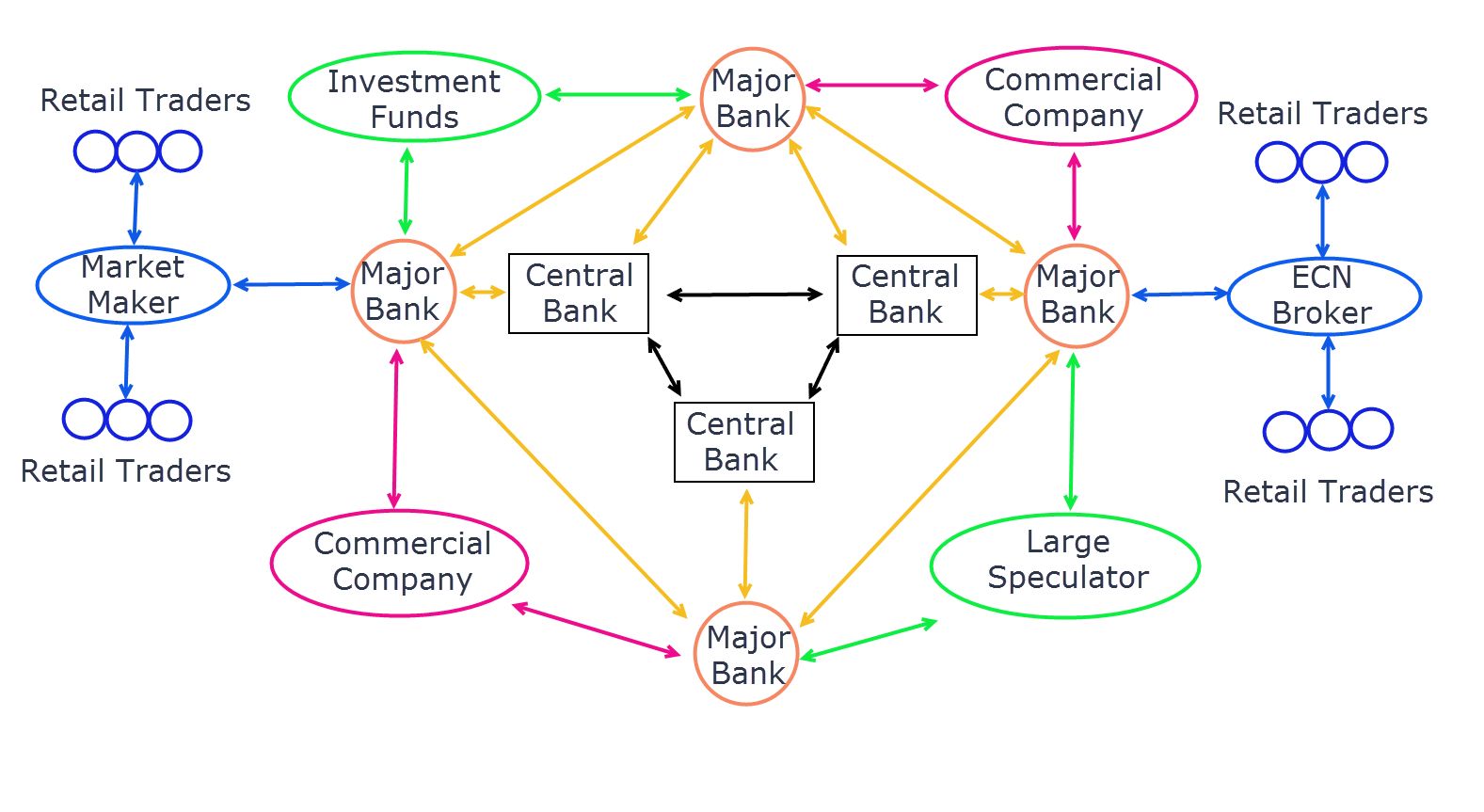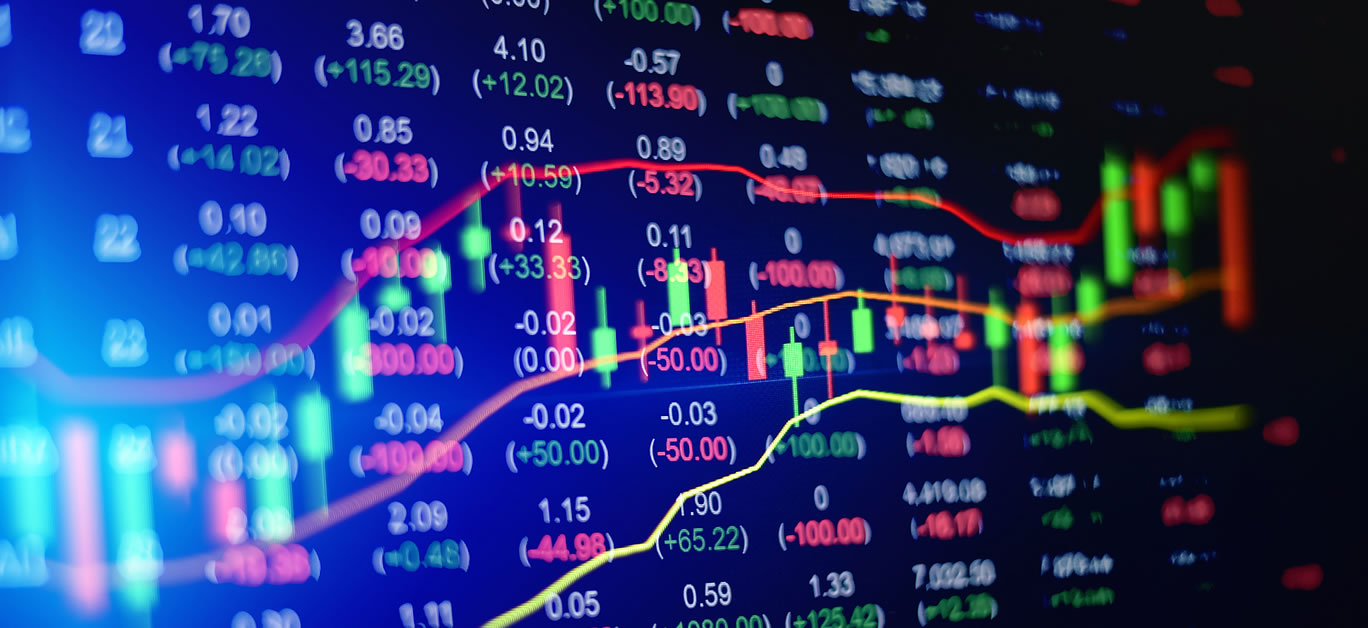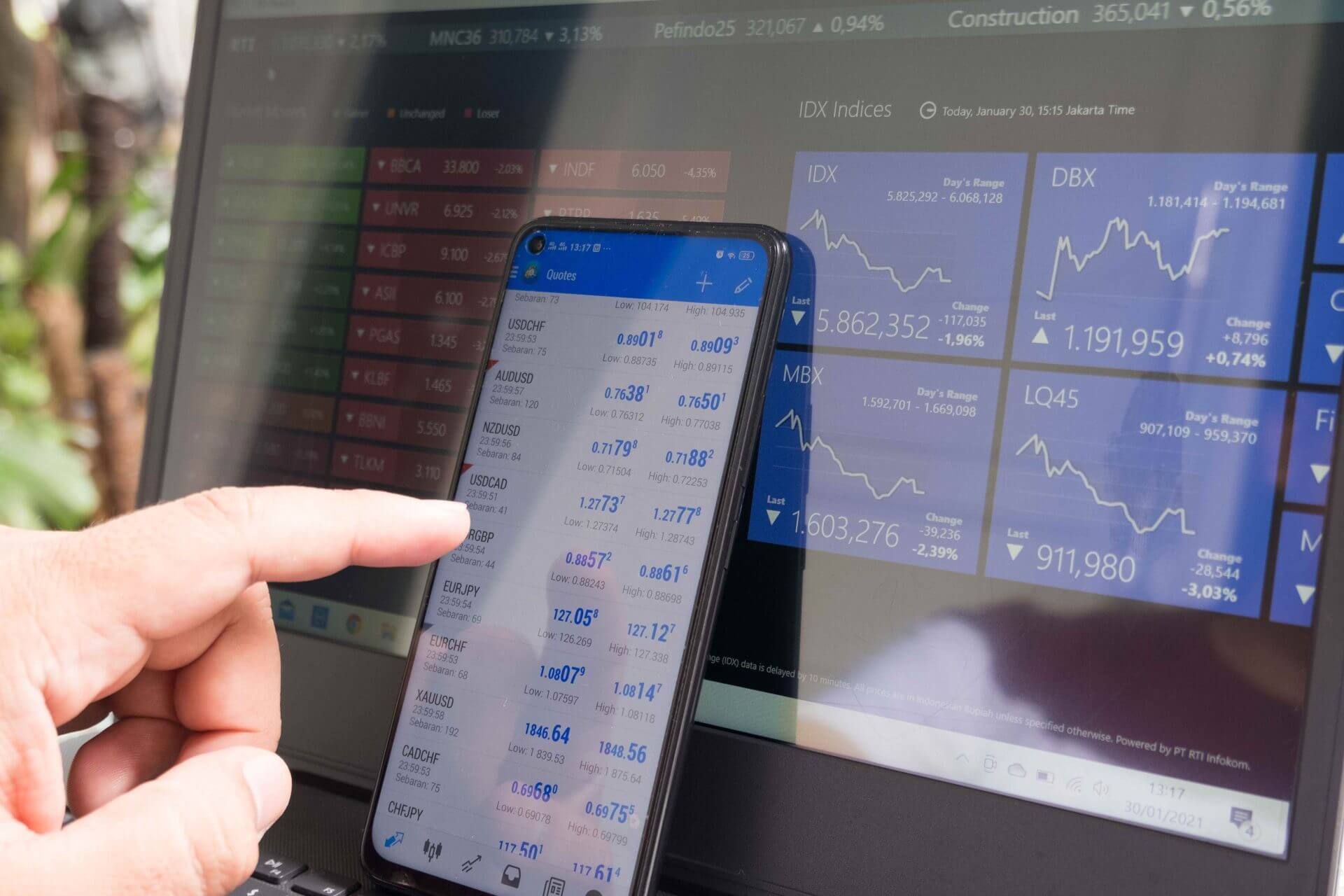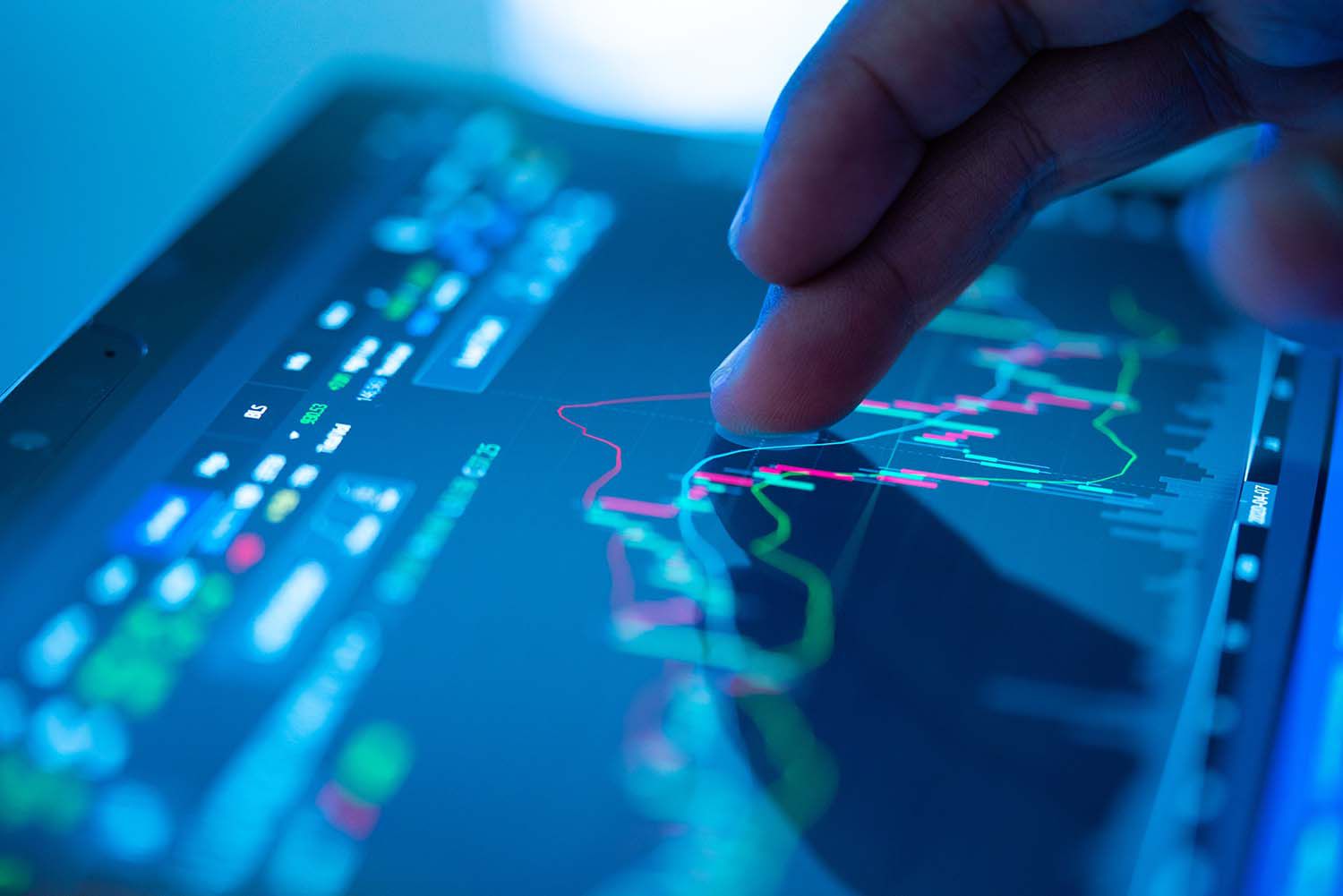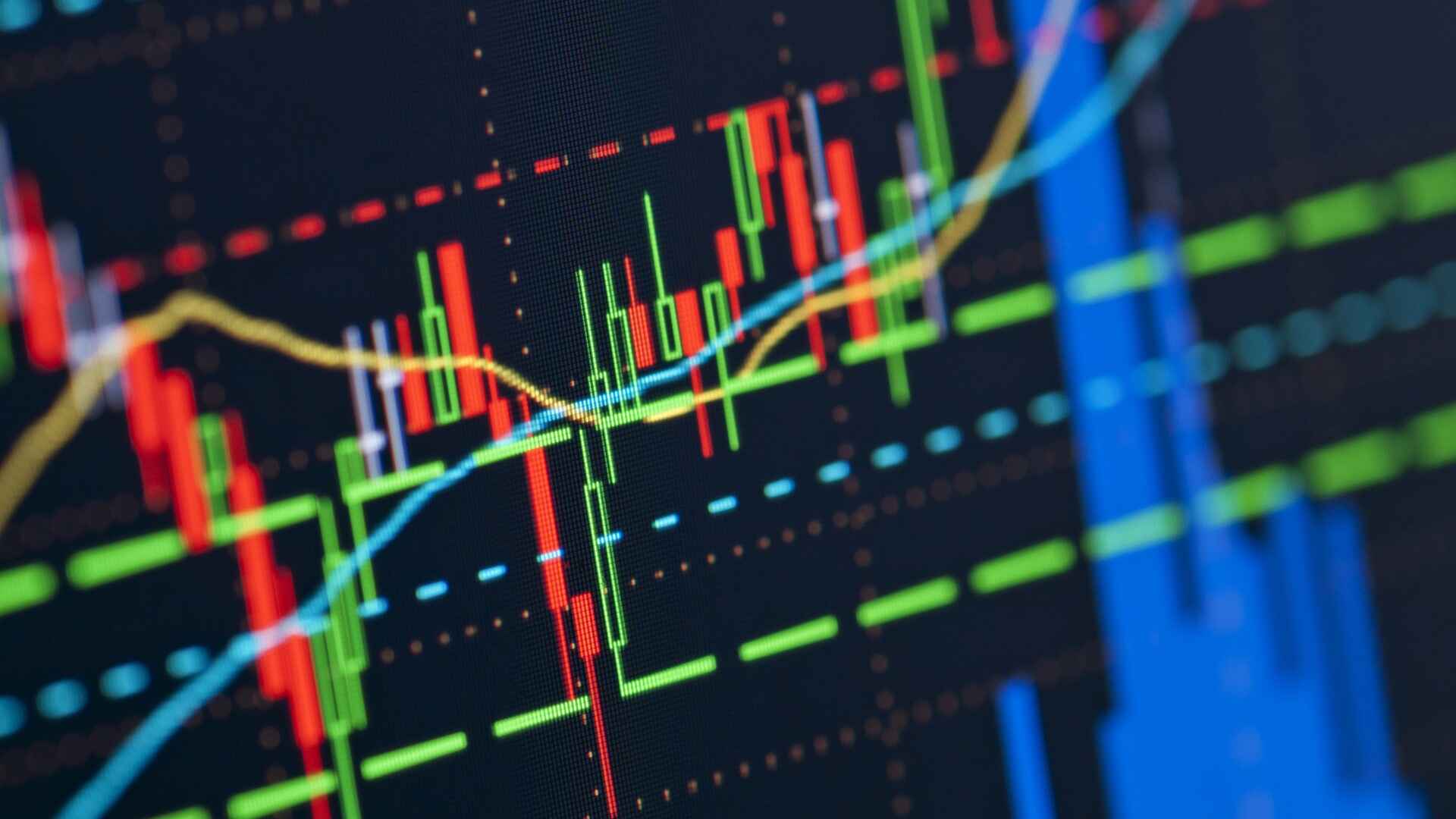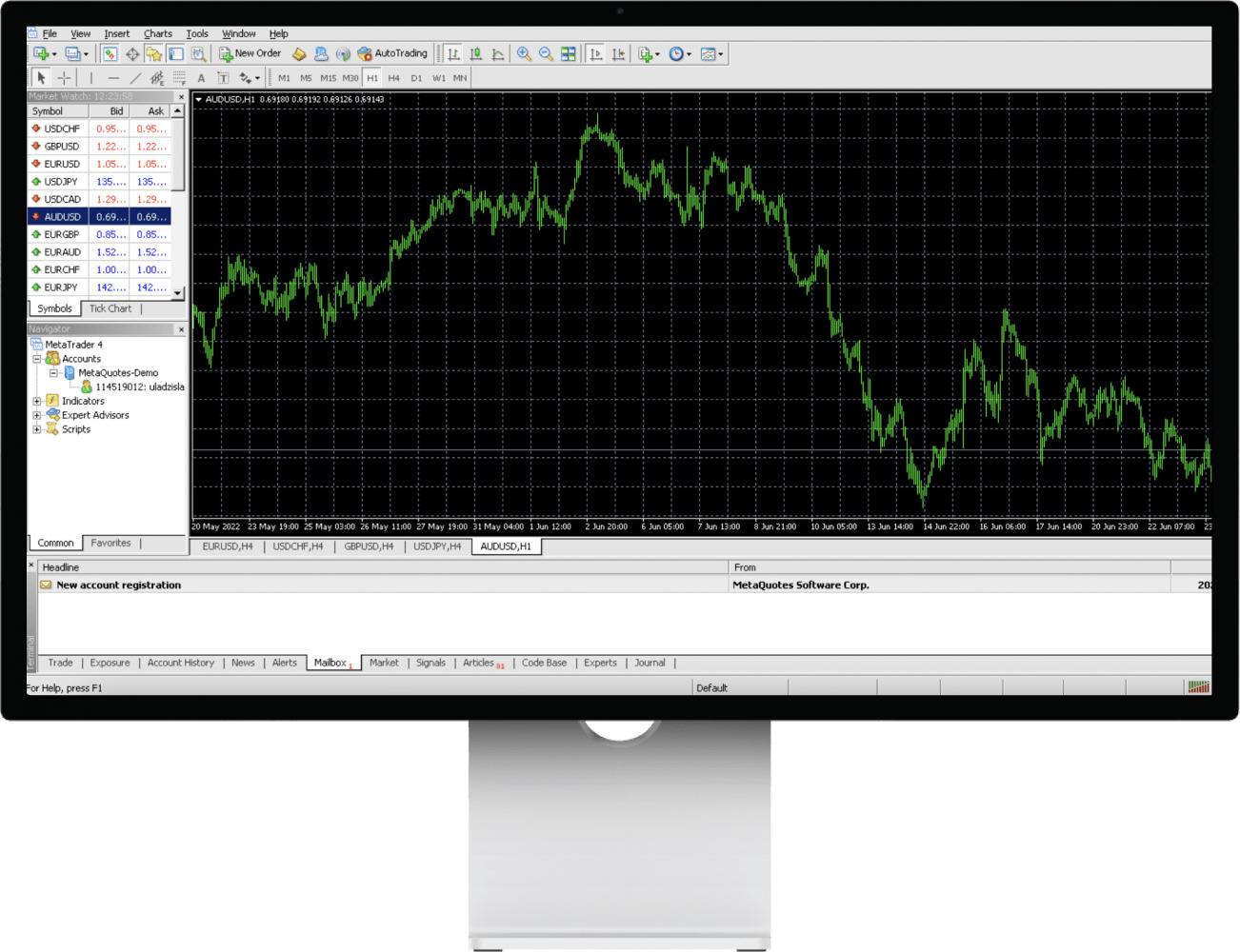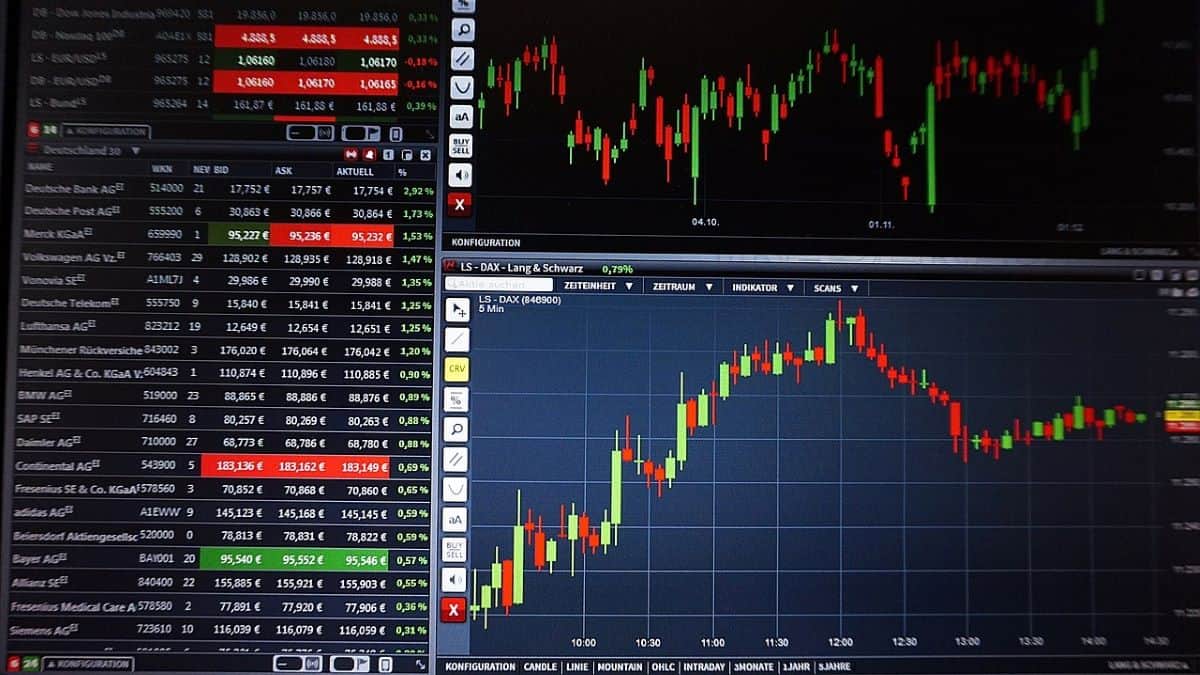What is Forex Trading
Forex trading, also known as foreign exchange trading, is the process of buying and selling currencies on the foreign exchange market. It is the largest and most liquid financial market in the world, with trillions of dollars traded daily.
In forex trading, currencies are traded in pairs, with one currency being bought and another being sold. The exchange rate between the two currencies determines the value of the trade. For example, if you believe that the value of the euro will rise against the US dollar, you would buy the euro and sell the US dollar.
The forex market operates 24 hours a day, five days a week, allowing traders to engage in trading activities at any time. This accessibility makes forex trading attractive to both professional traders and individuals looking to enter the financial markets.
One of the key characteristics of forex trading is leverage. Leverage allows traders to control a larger position in the market with a smaller initial investment. While leverage can amplify profits, it also increases the risk of losses.
Forex trading provides various opportunities for traders to profit. Traders can take advantage of fluctuations in exchange rates caused by economic news releases, geopolitical events, and market sentiment. Additionally, forex trading offers the potential for profit in both rising and falling markets.
It is important to note that forex trading carries risks, and it is essential for traders to have a clear understanding of the market before engaging in trading activities. Education, research, and practice are crucial to building the necessary skills and knowledge to trade forex successfully.
In the following sections, we will explore the benefits of forex trading, how to choose a forex broker, and the steps to open a forex trading account. We will also delve into essential forex trading terminology, basic trading strategies, risk management, and the importance of continuous learning and improvement as a forex trader.
Benefits of Forex Trading
Forex trading offers numerous benefits to individuals looking to participate in the financial markets. Understanding these benefits can help you decide if forex trading is a suitable option for you. Let’s explore some of the key advantages:
- Accessibility: The forex market operates 24 hours a day, five days a week, allowing traders to participate at their convenience. Unlike stock markets with fixed trading hours, the forex market provides flexibility to trade during different time zones.
- Liquidity: As the largest financial market in the world, the forex market offers high liquidity. This means there is a constant flow of buyers and sellers, ensuring you can always enter or exit trades without significant price disruptions.
- Low Costs: Forex trading typically involves low transaction costs compared to other financial markets. Brokers often charge minimal commissions or make profits from the spread between buying and selling prices. This cost-effective nature of forex trading allows traders to keep a larger portion of their profits.
- Profit Potential in Rising and Falling Markets: In forex trading, you can potentially profit from both rising (bullish) and falling (bearish) markets. If you believe a currency will appreciate, you can buy (go long), and if you anticipate a depreciation, you can sell (go short). This flexibility allows traders to capitalize on market movements in any direction.
- Leverage: Forex trading provides leverage, which allows traders to control positions much larger than their initial investment. Leverage amplifies potential profits, but it is crucial to use it wisely and understand the risk involved.
- Market Volatility: The forex market is known for its volatility, meaning it offers opportunities for potential significant price movements. Traders who thrive on volatility can take advantage of these market fluctuations through well-informed trading strategies.
- Diverse Trading Opportunities: With numerous currency pairs available for trading, forex offers a wide range of opportunities. You can focus on major currency pairs like EUR/USD or explore exotic currency pairs, allowing you to find setups that align with your trading style.
It is important to note that while forex trading provides attractive benefits, it also carries risks. Market conditions can rapidly change, and unwise trading decisions can lead to losses. It is crucial to have a solid understanding of the market, develop a trading plan, and manage risks effectively.
In the next sections, we will explore how to choose a forex broker, the process of opening a forex trading account, and essential forex trading terminology to enhance your understanding of the forex market.
Choosing a Forex Broker
Choosing the right forex broker is a critical decision that can significantly impact your trading success. With a wide range of brokers available, it’s essential to carefully evaluate your options. Consider the following factors to help you select a reliable and suitable forex broker:
- Regulation and Compliance: Ensure the broker you choose is regulated by a reputable financial authority. Regulatory bodies help protect traders by enforcing strict compliance standards and ensuring fair market practices.
- Trading Platform: The trading platform provided by the broker is your gateway to the forex market. It should be user-friendly, stable, and have advanced features for analysis and execution. Test the platform with a demo account to ensure it meets your needs.
- Range of Instruments: Consider the variety of currency pairs and other financial instruments offered by the broker. Having a diverse range of instruments allows you to explore different trading opportunities and diversify your portfolio.
- Execution and Spreads: Look for a broker that offers reliable and fast order execution. Additionally, pay attention to the spreads offered. A lower spread reduces your trading costs and can be especially important for scalpers and short-term traders.
- Customer Support: A good forex broker should offer prompt and efficient customer support. Look for brokers that provide multiple channels of communication and have a reputation for responsive and helpful customer service.
- Deposit and Withdrawal Options: Consider the available deposit and withdrawal methods offered by the broker. It should offer convenient and secure options that align with your preferences. Additionally, check for any fees or restrictions associated with deposits and withdrawals.
- Education and Research Resources: Beginners and experienced traders alike can benefit from educational resources and market analysis tools provided by the broker. Look for brokers that offer educational materials, webinars, and market analysis to help enhance your trading knowledge.
- Account Types: Evaluate the different types of accounts offered by the broker. Some brokers may have specific accounts for beginners or professional traders. Consider the account requirements, leverage options, and any additional features provided.
- Reputation and Reviews: Research the broker’s reputation by reading reviews and feedback from other traders. While reviews should be taken with a grain of salt, they can provide insights into the broker’s overall performance and customer satisfaction.
Remember that selecting a forex broker is a personal decision, as different traders have varying preferences and requirements. Take your time to evaluate your options and choose a broker that aligns with your trading style, goals, and risk tolerance.
Once you have chosen a forex broker, the next step is to open a forex trading account. In the following section, we will guide you through the account opening process, ensuring you are ready to enter the exciting world of forex trading.
Opening a Forex Trading Account
Opening a forex trading account is a straightforward process that allows you to start venturing into the forex market. Follow these steps to successfully open a forex trading account:
- Research and Choose a Forex Broker: Begin by selecting a reputable forex broker that meets your requirements. Consider factors like regulation, trading platforms, spreads, and customer support.
- Visit the Broker’s Website: Go to the broker’s website and locate the account opening section. Most brokers have a “Sign Up” or “Register” button prominently displayed on their homepage.
- Choose an Account Type: Determine the type of trading account you want to open. Brokers typically offer different account options, such as standard, mini, or demo accounts. Select the account type that aligns with your goals and trading experience.
- Complete the Application Form: Fill out the account application form provided by the broker. This typically includes personal information, contact details, and financial information. Ensure all the information you provide is accurate.
- Verify Your Identity: Most brokers require identity verification as part of the account opening process. This ensures compliance with regulatory requirements. You may be asked to provide a copy of your identification documents (passport, driver’s license, etc.) and proof of address (bank statement, utility bill, etc.).
- Read and Agree to the Terms and Conditions: Carefully read through the terms and conditions of the broker. Ensure you understand the trading rules, fees, leverage, and any other important information. If you agree to the terms, proceed to accept them.
- Fund Your Account: Once your account is approved, you will need to deposit funds into it. Most brokers offer various deposit methods, such as bank transfers, credit/debit cards, and e-wallets. Choose a convenient option and follow the instructions provided by the broker.
- Download and Set Up the Trading Platform: After funding your account, download the trading platform provided by the broker. Follow the installation instructions and set up your trading platform with your account login details.
- Practice with a Demo Account: Many brokers offer demo accounts that allow you to practice trading with virtual money. Take advantage of this feature to familiarize yourself with the platform, test strategies, and gain experience without risking real funds.
- Start Trading: Once you feel confident with your knowledge and skills, you can start trading with real money. However, it is essential to start with small trade sizes and gradually increase as you gain experience and confidence in your trading abilities.
Remember to manage your risk effectively and always adhere to your trading plan. Monitor the markets, analyze price movements, and continuously learn and improve your trading skills to enhance your chances of success.
In the next section, we will explore essential forex trading terminology to help you navigate the forex market with confidence.
Understanding Forex Trading Terminology
As you venture into forex trading, it is important to familiarize yourself with key forex trading terminology. Understanding these terms will help you navigate the forex market and communicate effectively with other traders. Let’s explore some of the essential forex trading terminology:
- Currency Pair: A currency pair represents two currencies that are traded in the forex market. It is quoted as a ratio, with the base currency as the first currency and the quote currency as the second currency. For example, in the EUR/USD pair, the euro is the base currency, and the US dollar is the quote currency.
- Pip: A pip is the smallest unit of measurement in the forex market. It represents the fourth decimal place in most currency pairs. For example, if the EUR/USD moves from 1.1500 to 1.1501, it has moved one pip.
- Lot: A lot is the standard trading size in forex. It represents a certain amount of currency units. The standard lot size is 100,000 units, but there are also mini lots (10,000 units) and micro lots (1,000 units).
- Long and Short Positions: Going long refers to buying a currency pair in anticipation of its value increasing. Going short refers to selling a currency pair with the expectation of its value decreasing. Traders can profit from both rising (long) and falling (short) markets.
- Spread: The spread refers to the difference between the bid price (selling price) and the ask price (buying price) of a currency pair. It represents the cost of entering a trade and can impact your overall profitability.
- Leverage: Leverage allows traders to control a larger position in the market with a smaller amount of capital. It is expressed as a ratio, such as 1:100, indicating that for every dollar of your capital, you can control 100 dollars in the market. Leverage amplifies both profits and losses.
- Margin: Margin is the capital required to open and maintain a trading position. It is a percentage of the total trade value and is used to cover any potential losses. Brokers require traders to deposit a certain margin amount to trade with leverage.
- Stop Loss: A stop-loss order is an instruction to automatically close a trading position when it reaches a specific price level. It is used to limit potential losses and protect against adverse market movements.
- Take Profit: A take-profit order is an instruction to close a trading position when it reaches a specific profit level. It allows traders to lock in profits and exit the market once their predetermined target is achieved.
- Order Types: There are different types of orders used in forex trading. Market orders are executed at the current market price, while limit orders are executed at a specific price or better. Stop orders are executed when the market reaches a specific price level.
These are just a few of the essential forex trading terms. As you continue your journey as a forex trader, you will encounter more terms and concepts that will deepen your understanding of the market. It is important to continuously expand your forex trading vocabulary to communicate effectively and make informed trading decisions.
In the next section, we will delve into basic forex trading strategies that can help you navigate the forex market with a systematic approach.
Learning Basic Forex Trading Strategies
Developing a solid trading strategy is crucial for success in the forex market. While there are various strategies, understanding some basic ones can provide a strong foundation for your trading journey. Let’s explore a few basic forex trading strategies:
- Trend Following: This strategy involves identifying and trading with the prevailing market trend. Traders look for price movements that consistently move in one direction and aim to enter trades in the direction of the trend. This strategy relies on technical analysis tools, such as moving averages and trendlines, to determine the trend direction.
- Breakout Trading: Breakout traders aim to take advantage of significant price movements that occur when a currency pair breaks through a key support or resistance level. Traders monitor price consolidation patterns and place trades once the price breaks above resistance or below support. This strategy requires careful analysis of chart patterns and understanding of key support and resistance levels.
- Range Trading: Range traders focus on trading within a price range. They identify well-defined levels of support and resistance and trade the currency pair as it bounces between these levels. Range trading requires patience and the ability to identify price reversals at the boundaries of the range.
- Carry Trading: Carry trading involves taking advantage of interest rate differentials between currencies. Traders aim to earn profits by going long on a currency with a higher interest rate and short on a currency with a lower interest rate. This strategy requires careful consideration of economic factors and risk management since unexpected shifts in interest rates can affect currency values.
- Counter-Trend Trading: Counter-trend traders aim to capitalize on price reversals or corrections within a prevailing trend. They identify overextended price moves and look for opportunities to enter trades against the current trend. Counter-trend trading requires precise timing and the ability to identify potential reversal signals.
It is essential to note that no strategy guarantees success in the forex market. Market conditions are dynamic, and strategies may yield different results in different market environments. It is crucial to backtest and refine your chosen strategy and adapt to changing market conditions.
In addition to strategy selection, risk management is a vital aspect of successful forex trading. Determine your risk tolerance, set appropriate stop-loss levels, and avoid overexposure to any single trade.
Remember that mastering a trading strategy takes time and practice. Start by using a demo account to test and refine your strategy before applying it to live trading. Analyze your trades, learn from both successes and failures, and continuously seek opportunities to enhance your trading skills.
In the next section, we will discuss the importance of developing a forex trading plan to guide your trading activities and decision-making process.
Developing a Forex Trading Plan
A forex trading plan serves as a roadmap for your trading activities, outlining your goals, strategies, risk tolerance, and decision-making process. Developing a trading plan can help you maintain discipline, manage emotions, and make consistent, informed trading decisions. Here are some key components to consider when developing your forex trading plan:
- Define Your Goals: Start by setting clear and realistic trading goals. Are you looking to generate a consistent income, build long-term wealth, or gain experience and knowledge? Your goals will shape your trading approach and help you stay focused.
- Specify Your Trading Strategy: Outline the specific strategies you will use to identify trading opportunities. Will you focus on technical analysis, fundamental analysis, or a combination of both? Specify the indicators, chart patterns, or economic indicators you will use to make trading decisions.
- Establish Risk Management Guidelines: Determine your risk tolerance and establish risk management guidelines. Define the maximum percentage of your account capital you are willing to risk on each trade, set stop-loss levels to limit potential losses, and decide on position sizing based on your risk-reward ratio.
- Set Entry and Exit Rules: Clearly define the conditions that signal entry and exit points for your trades. Specify the criteria you will use to enter a trade, such as specific candlestick patterns, breakout levels, or moving average crossovers. Determine the conditions that will trigger your exit, whether based on profit targets, trailing stop orders, or technical indicators signaling trend reversals.
- Monitor and Evaluate Your Trades: Regularly assess your trading performance and track the outcomes of your trades. Analyze your winning and losing trades to identify patterns, strengths, and weaknesses. Make adjustments to your trading plan based on the insights gained from your trade analysis.
- Stick to Your Plan: One of the most critical aspects of a trading plan is discipline. Follow your plan consistently, avoiding impulsive decisions based on emotions or short-term market fluctuations. Trust in your strategy and risk management guidelines to guide your trading decisions.
- Continuously Educate Yourself: The forex market is constantly evolving, and traders need to stay updated with market trends, economic events, and new trading techniques. Dedicate time to continuous learning through books, online courses, webinars, and staying informed about global economic news that can influence currency prices.
Remember, a trading plan is a flexible guide that can be adjusted as needed. It should evolve with your experience, learning, and changing market conditions. Regularly review and update your plan to ensure it accurately reflects your current trading goals and strategies.
By developing and following a trading plan, you can approach the forex market with a systematic and disciplined approach, increasing your chances of long-term success.
In the next section, we will explore the benefits of practicing with a demo account to gain experience and refine your trading skills.
Practicing with a Demo Account
Practicing with a demo account is a crucial step for novice traders to gain experience, refine their skills, and familiarize themselves with the forex market. A demo account allows you to trade with virtual money in real-time market conditions, providing a risk-free environment to practice your trading strategies. Here are the key benefits of using a demo account:
- Learning the Trading Platform: A demo account allows you to explore and become comfortable with the trading platform offered by your broker. You can practice executing trades, setting stop-loss and take-profit orders, and experimenting with different features and tools available on the platform.
- Gaining Experience: Trading in a simulated environment helps you gain practical experience in analyzing price movements, identifying trading opportunities, and managing trades. It allows you to understand the importance of patience, discipline, and risk management without risking your real funds.
- Testing and Refining Strategies: A demo account provides a platform to test and fine-tune your trading strategies. You can experiment with different indicators, timeframes, and entry/exit rules to see how they perform in different market conditions. It allows you to identify the strengths and weaknesses of your strategies and make necessary adjustments.
- Gaining Confidence: Trading can be an emotional rollercoaster, especially when real money is at stake. Practicing with a demo account helps you build confidence in your trading decisions and reduces emotional biases. It allows you to develop a trading routine and understand your psychological responses to wins and losses.
- Understanding Market Dynamics: Using a demo account enables you to observe and understand how the forex market operates in real-time. You can analyze the impact of economic events, news releases, and market sentiment on currency prices. This hands-on experience helps you develop a deeper understanding of market dynamics and improve your ability to make informed trading decisions.
- Tracking Performance: With a demo account, you can monitor and evaluate your trading performance without any financial risk. Keep a record of your trades, analyze your win rate, average profit/loss, and overall performance. This data will help you identify areas for improvement and track your progress as a trader.
While practicing with a demo account provides a valuable learning experience, it is important to remember that trading real money introduces additional factors, such as emotions and slippage. Transitioning from a demo account to live trading should be done gradually, starting with small trade sizes and carefully managing risk.
By making the most of a demo account, you can gain the experience, knowledge, and confidence necessary to navigate the challenges of live trading. It is an essential stepping stone in your journey to becoming a successful forex trader.
In the next section, we will discuss the importance of managing risk in forex trading to protect your capital and ensure long-term sustainability.
Managing Risk in Forex Trading
Managing risk is a fundamental aspect of successful forex trading. Proper risk management helps protect your capital, minimize potential losses, and ensure long-term sustainability. Here are some key practices for effectively managing risk in forex trading:
- Define Risk Tolerance: Determine your risk tolerance level before entering any trade. Understand how much capital you are willing to risk on each trade and set a maximum percentage of your account balance that you are comfortable losing.
- Use Stop-Loss Orders: Always use stop-loss orders to limit potential losses. A stop-loss order is an instruction that automatically closes your position if the trade goes against you, helping to prevent excessive losses.
- Set Realistic Profit Targets: Establish realistic profit targets for your trades. Determine the potential reward-to-risk ratio before entering a trade and aim for a reasonable target that aligns with your trading strategy and risk tolerance.
- Diversify Your Trades: Avoid overexposing your capital to a single trade or currency pair. Diversify your trades across different currency pairs, industries, or asset classes to spread your risk and reduce the impact of any individual trade on your overall portfolio.
- Use Proper Position Sizing: Calculate your position size based on your stop-loss level and risk tolerance. Adjusting your position size helps control the amount of capital at risk in each trade. Avoid risking too much on any single trade, as it can lead to significant losses.
- Be Aware of Leverage: Leverage allows you to control larger positions with a smaller amount of capital. While it can amplify profits, it also increases the risk of losses. Use leverage wisely and consider how it affects your risk exposure before opening a trade.
- Stay Informed About Market Events: Regularly stay updated on economic news releases and other events that can impact currency prices. Sudden market shifts can trigger increased volatility and potential risks. Adjust your risk management approach accordingly during high-impact periods.
- Practice Patience and Discipline: Stick to your trading plan and avoid impulsive decisions driven by emotions or short-term market fluctuations. Patience and discipline are key to maintaining a consistent risk management strategy and avoiding unnecessary losses.
- Regularly Review and Adjust: Continuously assess and review your risk management strategy. Monitor your trading performance, identify areas for improvement, and adjust risk parameters as needed. The forex market is dynamic, and adjustments to your risk management approach may be necessary as market conditions change.
Remember, successfully managing risk requires a balance between potential rewards and potential losses. Focus on consistently applying sound risk management practices rather than chasing profits without considering the associated risks. By prioritizing risk management, you can protect your trading capital and increase the likelihood of long-term success in forex trading.
In the next section, we will discuss the importance of monitoring and analyzing the forex market to make well-informed trading decisions.
Monitoring and Analyzing the Forex Market
To make well-informed trading decisions and stay ahead in the forex market, it is crucial to actively monitor and analyze market conditions. This involves regularly assessing market trends, economic indicators, and other important factors that can impact currency prices. Here are key practices for effective monitoring and analysis of the forex market:
- Stay Informed About Economic News: Keep track of major economic news releases, such as monetary policy announcements, employment data, inflation reports, and GDP growth figures. Economic indicators can provide insights into the overall health of different economies, influencing currency values.
- Follow Central Banks and Monetary Policy: Monitor the actions and statements of central banks, as they have a significant impact on currency movements. Pay attention to interest rate decisions, monetary policy changes, and central bank speeches, as they can signal potential shifts in currency valuations.
- Utilize Technical Analysis Tools: Technical analysis tools, such as chart patterns, trendlines, and indicators, can help identify potential entry and exit points. Analyze historical price data to spot patterns and trends that can assist in making trading decisions. Popular technical indicators include moving averages, Fibonacci retracements, and oscillators.
- Track Market Sentiment: Monitor market sentiment and investor behavior. Sentiment indicators, like the COT (Commitments of Traders) report, can provide insights into the positions of institutional traders and help gauge market sentiment. Additionally, news sentiment analysis and social media monitoring can offer a sense of overall market sentiment and potentially impact currency movements.
- Keep an Eye on Global Events: Stay updated on geopolitical events, trade disputes, and other global factors that can influence currency prices. Political developments and major international events can create volatility and impact market sentiment.
- Use Multiple Time Frames: Analyze currency charts on different time frames to gain a comprehensive view of the market. Long-term trends on higher time frames can provide the context for short-term trading decisions. Combining multiple time frames can help confirm trends and filter out noise in the market.
- Maintain a Trading Journal: Keep a trading journal to track your analysis, decisions, and outcomes of trades. Document your observations, reasoning behind trades, and lessons learned. A trading journal helps identify patterns in your trading performance and allows for continuous improvement.
- Stay Updated with Technical and Fundamental Analysis: Continuously educate yourself on technical and fundamental analysis techniques. Attend webinars, read market analysis reports, and follow reputable financial websites to stay informed about the latest trends and analysis in the forex market.
Regularly monitoring and analyzing the forex market allows you to make informed trading decisions based on a comprehensive understanding of market trends, economic factors, and investor sentiment. Remember to combine technical and fundamental analysis to gain a well-rounded view of the market dynamics.
In the next section, we will explore the process of executing forex trades and the various order types used in forex trading.
Executing Forex Trades
Executing forex trades involves the process of opening and closing positions in the currency market. It is important to understand the various order types and their functionalities to effectively execute trades. Here are the key steps involved in executing forex trades:
- Choose the Currency Pair: Select the currency pair you wish to trade based on your analysis and trading strategy. Consider factors such as liquidity, volatility, and market conditions when making your selection.
- Decide on Trade Direction: Determine whether you want to go long (buy) or go short (sell) on the chosen currency pair, based on your analysis and market expectations.
- Select the Order Type: There are several order types available in forex trading, including market orders, limit orders, and stop orders. A market order is executed instantly at the current market price. A limit order is placed to buy or sell at a specific price or better, while a stop order is triggered when the market reaches a specified price level.
- Specify Trade Size and Leverage: Determine the size of your trade position, which refers to the number of lots or units you want to trade. Consider your risk management strategy and leverage requirements. Leverage allows you to control a larger position with a smaller amount of capital, but it also amplifies both profits and losses.
- Set Stop-Loss and Take-Profit Levels: As part of your risk management plan, set your desired stop-loss and take-profit levels. A stop-loss order is designed to limit potential losses by automatically closing the trade if the price moves against you. A take-profit order, on the other hand, automatically closes the trade once a specified profit target is reached.
- Monitor and Manage Your Trade: Once your trade is executed, monitor the market closely. Adjust stop-loss and take-profit levels if necessary, based on price movements and market conditions. You may also consider employing trailing stops to lock in profits as the trade moves in your favor.
- Close Your Trade: Decide when to close your trade based on your trading plan and analysis. You can close the trade manually if it reaches your profit target or if it hits your predetermined stop-loss level. Alternatively, you can let the trade run until your take-profit or stop-loss order is automatically triggered.
- Review and Learn: After closing a trade, review your performance and analyze the outcome. Assess whether your trading decisions were in line with your strategy and learn from both successful and unsuccessful trades. This feedback loop is essential for continuous improvement.
Remember to practice proper risk management and ensure that you have sufficient capital, margin, and trading knowledge before executing trades. Monitor market conditions, economic events, and news releases that may impact your chosen currency pair.
Executing forex trades requires careful consideration of market conditions, order types, risk management, and trade management techniques. By mastering this process, you can enhance your trading skills and increase your potential for success in the forex market.
In the next section, we will explore the importance of evaluating and adjusting your forex trading strategy to adapt to changing market conditions.
Evaluating and Adjusting Forex Trading Strategy
Evaluating and adjusting your forex trading strategy is crucial for long-term success in the dynamic forex market. The ability to adapt your strategy based on market conditions and performance is key to staying profitable. Here are some important steps to evaluate and adjust your forex trading strategy:
- Track and Analyze Your Performance: Regularly review your trading performance by analyzing your trades, including entry and exit points, profit and loss, and overall performance. Keep a trading journal and record your observations to identify patterns and areas for improvement.
- Assess Your Risk-Return Ratio: Evaluate the risk-reward ratio of your trades. Compare your average profits to your average losses. If your losses outweigh your profits, it may indicate that your strategy needs adjustments in terms of entry points, stop-loss levels, or trade management.
- Analyze Market Conditions: Assess how your strategy has performed in different market conditions. Look for patterns in your trades to determine if your strategy excels in certain market environments, such as trending or ranging markets. Adjust your strategy accordingly to align with prevailing market conditions.
- Consider Timeframe Suitability: Evaluate if the timeframe you are trading aligns with your strategy. Certain strategies may work better on shorter timeframes, while others may be more suitable for longer-term trading. Experiment with different timeframes to find the one that best suits your trading approach and goals.
- Continuously Educate Yourself: Stay updated with the latest developments in the forex market. Attend webinars, read books and articles, and follow reputable sources for market analysis. Incorporate new insights and techniques into your strategy as needed.
- Backtest and Forward Test: Use historical data to backtest your strategy, simulating trades based on past price movements. This helps evaluate its performance in different market scenarios. Additionally, forward test your strategy by implementing it in a demo account to assess its effectiveness in real-time market conditions.
- Implement Adjustments Gradually: Make adjustments to your strategy gradually. Avoid making multiple changes all at once, as it can make it difficult to assess the impact of each adjustment. Implement and evaluate adjustments one at a time to measure their efficacy.
- Stick to Your Plan: Once you have made adjustments to your strategy, give them time to play out. Avoid impulsive changes based on short-term results. Stick to your adjusted plan, monitor its performance, and evaluate its effectiveness over an extended period.
- Seek Feedback and Mentorship: Collaborate with experienced traders or join trading communities to gain insights and feedback on your trading strategy. Engaging with other traders can provide fresh perspectives and help you identify areas for improvement.
Remember that no strategy guarantees 100% success. The evaluation and adjustment process is ongoing, and your strategy should adapt to changes in market dynamics. By regularly reviewing, analyzing, and adjusting your forex trading strategy, you can enhance your chances of long-term profitability.
In the next section, we will discuss the importance of keeping a trading journal to track your progress and learn from your trading experiences.
Keeping a Trading Journal
Keeping a trading journal is an invaluable tool for forex traders to track their progress, monitor performance, and learn from their trading experiences. A trading journal is a written record where you document your trades, observations, and emotions throughout your trading journey. Here are the key benefits of keeping a trading journal:
- Track and Analyze Your Trades: A trading journal allows you to record the details of each trade, including entry and exit points, trade size, stop-loss and take-profit levels, and the outcome of the trade. By reviewing past trades, you can identify patterns, strengths, and weaknesses in your trading strategy.
- Analyze Your Decision-Making Process: Documenting your thoughts, analysis, and reasons behind entering or exiting a trade helps you reflect on your decision-making process. You can assess whether you followed your trading plan or acted on emotional impulses, allowing you to refine your approach and improve discipline.
- Evaluate Risk-Reward Ratio: Reviewing your trading journal helps you analyze your risk-reward ratio. By tracking the profitability of your trades and determining the average risk-reward, you can assess if your strategy is providing an adequate return given the risks taken.
- Identify Patterns and Improve Accuracy: By recording your observations and analysis in a trading journal, you can identify recurring patterns in the market and refine your trading strategy accordingly. It helps you recognize setups with better accuracy and make more informed trading decisions.
- Manage Emotions and Psychological Factors: A trading journal allows you to document your emotional state during trades. By reviewing your journal entries, you can identify patterns of emotional biases and work on managing them more effectively, enhancing your ability to stay disciplined and make rational decisions.
- Track Progress and Assess Performance: A trading journal provides a means to track your progress as a trader. You can analyze your overall performance, win rates, average profits, and losses over time. This data helps you evaluate the effectiveness of your strategy and make informed adjustments.
- Learn from Your Mistakes: Mistakes are a valuable learning opportunity. Recording them in your trading journal enables you to review and learn from them. By analyzing your mistakes, you can identify areas for improvement, refine your strategy, and avoid repeating the same errors.
- Cultivate Continuous Improvement: By maintaining a trading journal, you cultivate a habit of continuous improvement. It encourages self-reflection, analysis, and the development of new insights, helping you refine your approach, adapt to changing market conditions, and enhance your overall trading skills.
When keeping a trading journal, be detailed and consistent. Include relevant information about each trade, such as the currency pair, date and time, market conditions, and any significant external factors. Additionally, reflect on your observations, lessons learned, and areas for improvement.
Reviewing your trading journal regularly is essential for growth as a trader. Set aside time to analyze your entries, identify patterns, and make adjustments to your trading plan accordingly. By leveraging the insights gained from your trading journal, you can refine your strategy and increase your chances of success in the forex market.
In the next section, we will emphasize the importance of continuous learning and improving your forex trading skills to stay ahead in the dynamic market.
Continuously Learning and Improving Forex Trading Skills
In the ever-evolving forex market, continuous learning and skill improvement are essential for achieving long-term success as a trader. The ability to adapt and stay informed about market trends, strategies, and new techniques is paramount. Here are the key reasons why continuously learning and improving forex trading skills is crucial:
- Stay Updated with Market Developments: The forex market is influenced by various factors, including economic news, geopolitical events, and shifts in market sentiment. Continuously learning allows you to stay abreast of market developments and adjust your trading strategies accordingly.
- Enhance Technical Analysis Skills: Technical analysis is a vital tool for understanding and predicting price movements. By expanding your technical analysis skills, you can effectively identify trends, chart patterns, and indicators, enabling you to make more accurate trading decisions.
- Deepen Fundamental Analysis Knowledge: Economic indicators, central bank policies, and geopolitical events significantly impact currency prices. Expanding your fundamental analysis knowledge helps you understand the underlying factors driving market movements, leading to more informed trading decisions.
- Explore Different Trading Strategies: Continuous learning allows you to explore and understand various trading strategies. Experiment with different approaches, such as trend following, range trading, or breakout strategies, to discover what aligns best with your trading style and market conditions.
- Adapt to Changing Market Conditions: Market conditions are dynamic and can undergo shifts. By continuously learning, you can adapt your trading strategies and techniques to changing market environments. This flexibility enhances your ability to capitalize on emerging opportunities and navigate challenging conditions.
- Manage Risk Effectively: Risk management is a crucial aspect of successful trading. Continuous learning helps you refine your risk management techniques, including position sizing, setting appropriate stop-loss orders, and evaluating risk-reward ratios. Improved risk management minimizes potential losses and protects your trading capital.
- Gain Insights from Experienced Traders: Learning from experienced traders and industry experts is invaluable. Seek mentorship or join trading communities to gain insights, receive feedback, and expand your understanding of market dynamics. Engaging with peers allows you to exchange ideas and learn from their experiences.
- Develop Emotional Control: Continuous learning improves your ability to manage emotions while trading. It helps you develop the discipline and psychological resilience required to make rational decisions, avoid impulsive actions, and stick to your trading plan, even during volatile market conditions.
- Cultivate a Growth Mindset: Adopting a growth mindset fosters a desire for continuous improvement. Embrace challenges, view losses as learning opportunities, and seek ways to strengthen your trading skills. A growth mindset fuels motivation and encourages resilience in the face of setbacks.
- Utilize Technology and Analytical Tools: Stay updated on advancements in trading technology and analytical tools. Embrace the use of software, indicators, economic calendars, and automated trading systems to streamline your analysis and execution processes, saving time and improving efficiency.
Continuously learning and improving as a forex trader is a journey that requires commitment and dedication. Stay curious, regularly read educational resources, attend webinars, and expand your knowledge base. The forex market is dynamic, and staying ahead requires a thirst for knowledge and continuous skill enhancement.
In the next section, we will summarize the key points discussed throughout this article.







